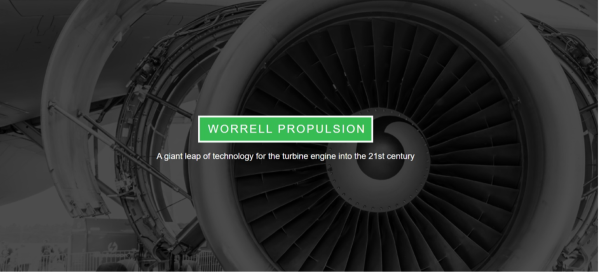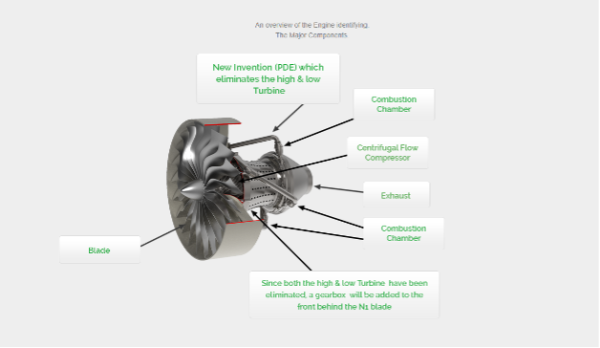
From their birth, jet engines burn fuel through deflagration which became the standard for their reliability and availability. Deflagration or the rapid fuel-air process is effective. However, the negativity is the higher rate of fuel burn because of its continuous flow of fuel into the combustion chamber.
Another drawback of contemporary turbine engines, which burns fuel by deflagration, is the extreme temperature in the combustion chamber. To combat the high temperature, expensive metals need to be used. With Worrell Propulsion’s invention, expensive metals are not required, reducing cost of production.
Worrell Propulsion, an American company founded by Ken Worrell has created a patent-pending Turbo Pulse Detonation Engine – a revolutionary answer to the drawbacks of contemporary deflagration aircraft turbine engines.
According to the cutting-edge research conducted by Aerospace America, the deflagration air-fuel combustion process is vastly inferior to the detonation process in terms of fuel burnout time, aircraft maintenance, and more:
“Detonation combustion burns a given unit of fuel tens of thousands of times faster than deflagration. This creates pressure spikes with 10 to 1 fluctuations,” as quoted in Aerospace America’s research.
Ken Worrell holds the following FAA certificates, airline transport pilot, flight engineer turbojet, flight instructor, and advanced ground instructor. Ken invented a new kind of pulse detonation engine that harnesses the power of air-fuel detonation and vastly amplifies the benefits it holds over deflagration.
According to Ken, his new invention offers six key advantages in comparison to contemporary alternatives.
The lower manufacturing time and cost will enable companies creating pulse engines to quickly adopt this technology and place it on the market.
Superior fuel efficiency and cleaner burn cause less damage to the environment while cutting costs of fuel supply. By releasing significantly fewer pollutants in the air, units using Worrell Propulsion engines will have a smaller carbon footprint, enabling airlines to adopt greener policies and conform to relevant regulations more quickly.
Another important benefit Worrell Propulsion engines offer is their quiet mode of operation. Traditional pulse detonation engines tend to emit bellowing noises that can far exceed 140 decibels, eclipsing the “sonic” pain threshold most humans can endure.
The considerably lighter weight of Worrell Propulsion engines impacts a variety of key elements of the performance of all aircraft. From fuel consumption and climb rate to controllability, speed, and most importantly structural integrity, these lightweight engines were specifically designed to augment the performance of the aircraft they are installed in.
Aside from aircraft, this universal engine has a broad range of applications. From generators and military tanks to drones and auxiliary power units for jets, Worrell Propulsion engines are versatile.
Ken divulged the basics of how his PDE engine design works on his official website, imparting the following:
“Fuel enters the combustion chamber with ignition to follow. Exploding gases close the valves. This causes the force of the explosion to move in the opposite direction. Once the pressure drops against the valves, the cycle starts over,” said Ken.

More information about WorrellPropulsion.com is available on the company’s official website.
Media Contact
Company Name: WorrellPropulsion.com
Contact Person: Ken Worrell
Email: Send Email
Country: United States
Website: https://WorrellPropulsion.com
